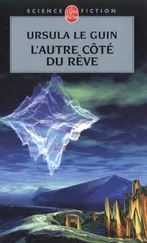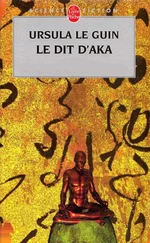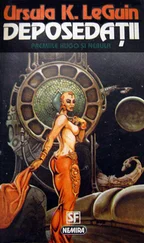Actually a wide choice of parties: one in a gilded ballroom, with balloons and waltzes and an orchestra; one in a “Green-which Village Flapper Days Loft,” with jazz and bootleg gin; one in a “Cheers-Type Bar,” one at a “Sixties Hippie Love-In,” and so on. An appropriate costume for the evening, from ball gown or black tie to purple mohawk wig and temporary nose and lip studs, may be rented. Studying the faces in the photographs of parties in progress, I’d guess that an appropriate companion for the evening may also be rented. Among the dancers, at the buffet tables, clinking champagne glasses, are a lot of pretty, young women and handsome, fortyish men. They are all slender, all dark, and all smiling. They don’t look like tourists. The tourists do.
I got the impression from these brochures that a visit to the Great Joy Corporation’s plane might be quite expensive, though no prices are listed. If you call the 800 number or try to find out on the Net, they just assure you that transportation to the plane is “absolutely free,” and suggest brightly that you’ll want to bring a “valid credit card.” Cousin Sulie tells me that “it isn’t half as bad as that place with the funny name in Florida that Sally Ann insisted on us going to. Honey, those people, they’ll skin you.”
On New Year’s Island just before midnight (which I believe occurs every twelve hours, possibly every six) everybody who can still stand up flocks out to the great courtyard, where a three-story-tall TV screen shows the ball falling down in Times Square. Everybody holds hands and champagne glasses with the usual difficulty and sings “Auld Lang Syne.” There are fireworks and more champagne, and the party goes on. And on, and on. I wonder how they clean the party rooms. Maybe they have duplicate rooms, one in use and one being cleaned. Maybe nobody notices. I wonder how they get drunks back to their airport of origin on time, and if they don’t, do they get sued? Not that it’s any use suing a corporation. I wonder what they give people to smoke at the Hippie Love-In Party and to use at the Punk Underground Party, and how they get them back where they started.
Anyhow, where it’s always New Year’s Eve it’s never New Year’s Day. No resolutions need be made. There’s no need even to send the partygoers home so long as they’re willing to carry on partying until the countdown begins again and the ball falls down in Times Square again and the fireworks go off again and they sing “Auld Lang Syne” again and have some more champagne. Beyond this my imagination balks. It will not furnish me with any further possibilities concerning life on New Year’s Island. It informs me that there are none.
Cousin Sulie and I don’t see eye to eye on everything, but in this case we agree. “I wouldn’t go to that party island,” she said. “I always did hate New Year’s Eve.”
I noticed that one element of the entertainment in the great courtyard was a Chinese New Year in San Francisco Dragon Parade. The natives in the picture look far more convincing as Chinese Americans than as cupids or elves or Revolutionary soldiers crossing the Delaware. It got me to wondering if there were any, as it were, un-American islands on the Great Joy Corporation plane. Sulie was vague about this. “There’s lots of islands,” she said. “Some of them might be foreign.”
With this and other questions in mind, I called my friend Sita Dulip. To my surprise, she had not even heard about the plane. I told her what I could and sent her all the literature I had.
After a week or two she called me back. She had tried to contact the Great Joy Corporation and had the expectable difficulty getting anywhere behind the 800 number. But Sita is knowledgeable and persistent, and she finally sweet-talked her way to somebody in Public Relations, who sent her a set of literature and fliers, much the same as those Sulie had collected, and also a list of memos on Island Projects. These had been generated by the PR and Development departments and were apparently under consideration by the decision makers of the corporation. They included:
Isla Cinco de Mayo (a fully developed plan that is evidently about to be implemented)
Sit Seder Every Night! (lack of detailed information on this indicates that the project has been shelved)
Kwanzaa! Afric-Island (a rough sketch of facilities and “participatory entertainments,” with approving notations from higher-ups, such as Go for if)
Tét Everlasting (almost no details)
Holi Holi Holi (a long, enthusiastic memo, describing all the possibilities of colored water and colored powder and classical Indian dance, signed R. Chandranathan, which does not seem to have received encouragement from above)
Sita continues to investigate the Great Joy Corporation and its plane.
HAVING WRITTEN THIS MUCH, I decided to put the piece away until I had heard from Sita again. It was nearly a year before she got in touch and brought me up to date.
Soon after we talked, Sita decided to notify the Interpla-nary Agency of the operations of the Great Joy Corporation on “The Holiday Plane™”—which turned out to have been known for centuries to the Agency. It is described (in its original state) and listed in the Encyclopedia Planaria as Musu Sum.
The Agency, as may be imagined, is overloaded with the tasks of registering and investigating newly discovered planes, installing and inspecting transfer points, hostels, and tourist facilities, regulating interplanar relations, and a thousand such responsibilities. But when they learned that a plane had been closed to free entry and exit and was being operated as a sort of prison camp for its inhabitants to the profit of the operators, they acted at once, decisively.
I do not know how the Agency exerts its authority, or even on what its authority rests, or what instruments of persuasion it may use; but the Great Joy Corporation no longer exists. It has ceased to be, as mysteriously as it came to be, still without a history, or a face, or a shred of accountability.
Sita sent me the new literature from Musu Sum. The island resorts are now being operated by the islanders themselves as a cooperative venture, supervised for the first year by expert advisers from the Agency.
This makes sense, in that the modest subsistence economy of the region was completely destroyed by the Great Joy Corporation and cannot be restored overnight, while all the hotels and restaurants and roller coasters are in place, and people who have been trained to serve and entertain the tourists might as well use and profit by their training. On the other hand, it boggles the mind a bit. Especially Fourth Island. An orgiastic monument of American sentimental nationalism operated entirely by people who know nothing about the United States except that they were ruthlessly used by Americans for years? Well, I suppose it is not wholly improbable even on this plane. Exploitation can cut two ways.
I have met a native of Musu Sum, one of the first to take advantage of his people’s newly regained freedom to travel; Sita asked him to come by and see me. He thanked me most graciously for my part in the liberation of his people. That it was a totally accidental and tangential part made no difference to
Esmo So Mu. He gave me as a “gift of the gratitude of my people” a little wickerwork ball, a child’s toy, rather crudely made. “We don’t make such beautiful things like Americans,” he said apologetically, but I think he saw that I was touched by the gift.
His English was quite fluent. He had been one of Santa’s elves as a boy and then was transferred to New Year’s Island as a waiter and part-time gigolo. “It was not so bad,” he said, then, “It was bad,” and then, his high-cheek-boned, expressive face crinkling into a laugh, “but not very-very bad. Only the food was very-very bad.”
Читать дальше









